Cruise Ship Types and Classifications: Cruise ships have become a popular choice for vacationers around the world. These massive vessels offer a wide range of amenities and activities for passengers to enjoy while sailing the seas. However, not all cruise ships are created equal. There are different types and classifications of cruise ships that cater to different types of travelers.
One of the most common ways to classify cruise ships is by size. Mega cruise ships are the largest of their kind and can accommodate more than 5,000 passengers on board. These massive vessels offer a resort-like experience with a wide range of dining and entertainment options. On the other hand, smaller cruise ships can provide a more intimate experience for travelers who prefer a quieter and more relaxed atmosphere.
Another way to classify cruise ships is by their destination. Some cruise ships are designed for tropical destinations, while others are designed for colder climates. For example, an Alaskan cruise ship may have a different design and amenities compared to a Caribbean cruise ship. Additionally, some cruise ships are designed for river cruising, allowing passengers to explore inland waterways and smaller ports of call.
Overview of Cruise Ship Types
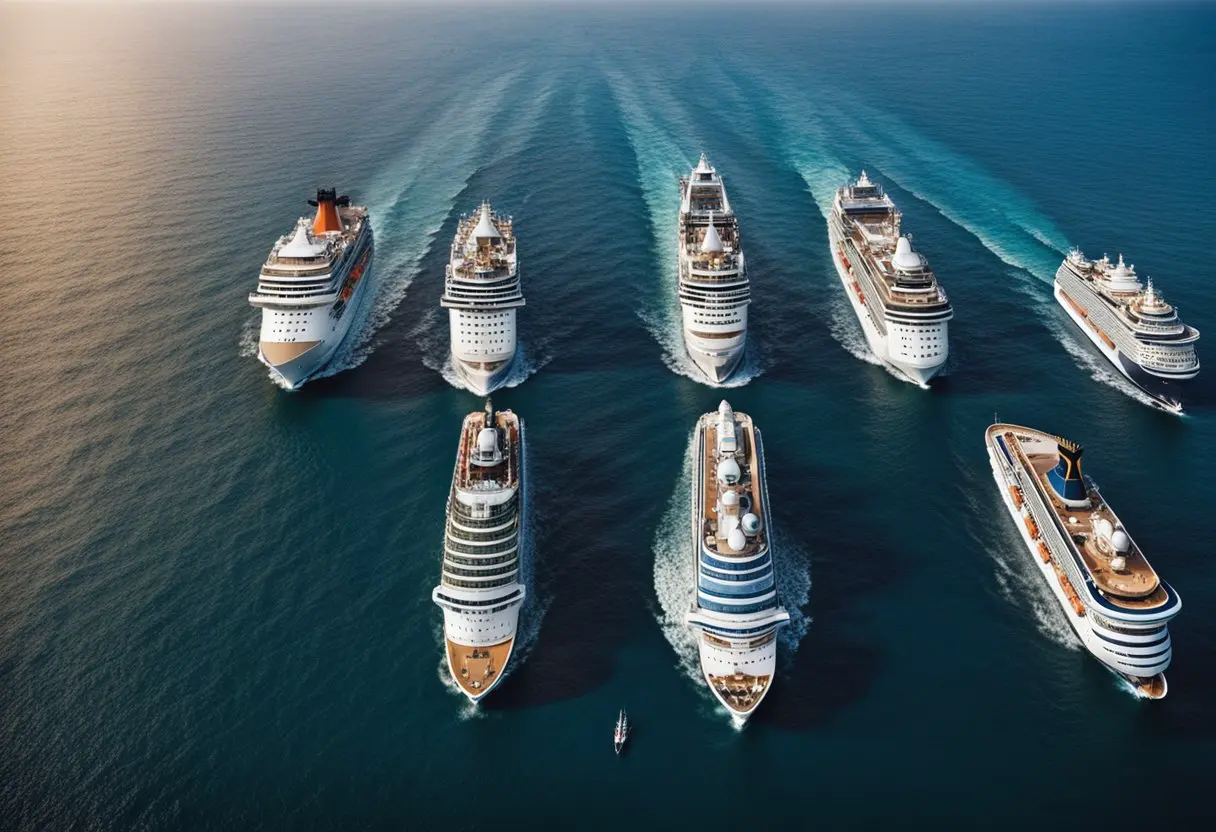
Cruise ships can be broadly classified into five main types: mainstream, luxury, expedition, river, and specialty. Each type caters to a different kind of traveler and offers a unique experience. In this section, we will provide a brief overview of each type.
Mainstream Cruise Ships
Mainstream cruise ships are the most common type of cruise ship. They are designed to cater to a wide range of travelers, from families with children to singles and couples. These ships are typically larger and have a capacity of up to 6,000 passengers. They offer a variety of activities and amenities, including multiple dining options, entertainment shows, casinos, and swimming pools. Mainstream cruise ships are operated by major cruise lines such as Royal Caribbean, Carnival, and Norwegian Cruise Line.
Luxury Cruise Ships
Luxury cruise ships are designed to offer a high-end experience to passengers. They are typically smaller in size and have a capacity of up to 1,000 passengers. These ships offer a more intimate and personalized experience, with a higher crew-to-passenger ratio. They offer top-notch amenities, including gourmet dining, spa treatments, and exclusive shore excursions. Luxury cruise ships are operated by premium cruise lines such as Seabourn, Crystal Cruises, and Regent Seven Seas.
Expedition Cruise Ships
Expedition cruise ships are designed to take passengers to remote and exotic destinations such as the Arctic, Antarctic, and Galapagos Islands. These ships are typically smaller in size and have a capacity of up to 500 passengers. They offer a more adventurous and educational experience, with expert guides and naturalists on board. Expedition cruise ships are operated by cruise lines such as Lindblad Expeditions, Hurtigruten, and Ponant.
River Cruise Ships
River cruise ships are designed to navigate inland waterways such as rivers and canals. These ships are typically smaller in size and have a capacity of up to 200 passengers. They offer a more relaxed and cultural experience, with scenic views of the surrounding landscapes and visits to historic towns and cities. River cruise ships are operated by cruise lines such as Viking River Cruises, AmaWaterways, and Uniworld.
Specialty Cruise Ships
Specialty cruise ships are designed to cater to specific interests and hobbies such as music, food, and sports. These ships are typically smaller in size and have a capacity of up to 500 passengers. They offer a more niche and immersive experience, with themed activities and events on board. Specialty cruise ships are operated by cruise lines such as Star Clippers, Windstar Cruises, and U by Uniworld.
Overall, each type of cruise ship offers a unique experience and caters to a different kind of traveler. Whether you are looking for adventure, relaxation, luxury, or culture, there is a cruise ship out there for you.
Cruise Ship Classifications
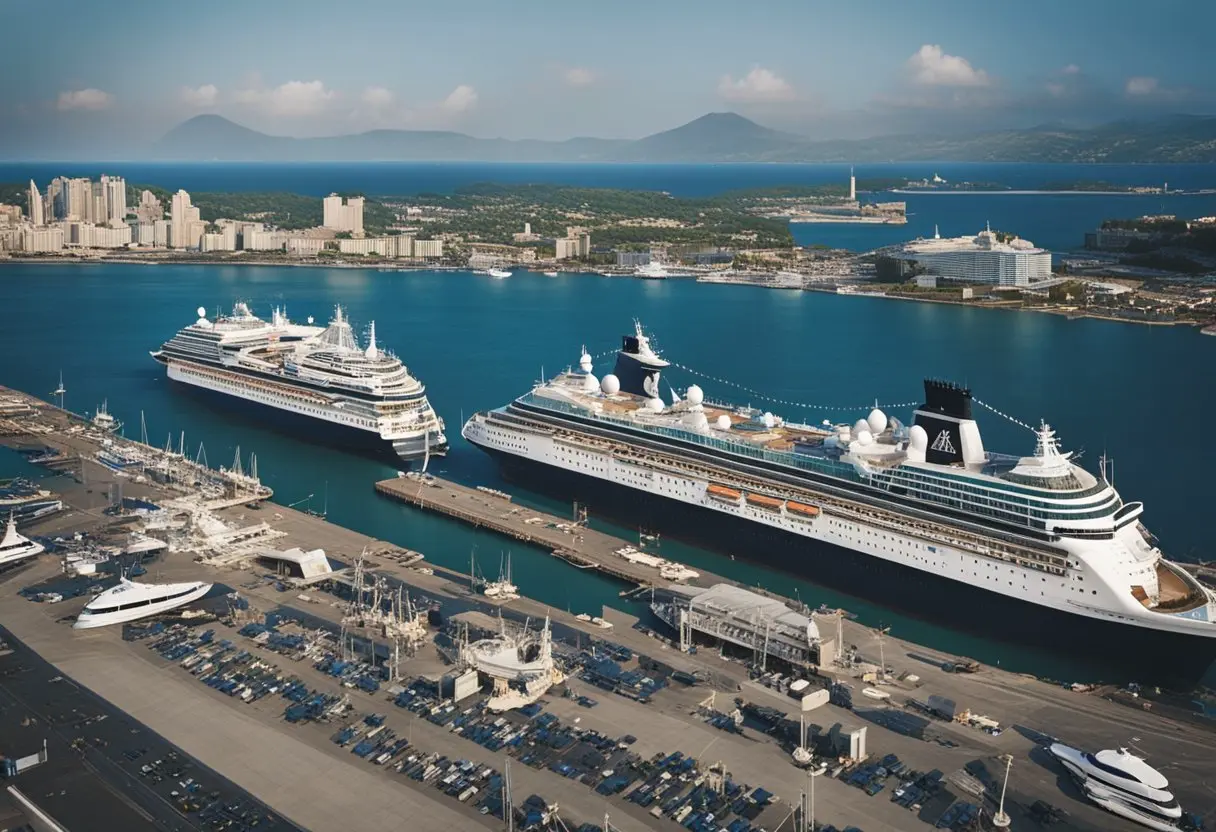
Cruise ships come in different sizes, passenger capacities, crew ratios, and destinations. Understanding the different classifications can help you choose the right ship for your needs.
By Size
Cruise ships are classified by their size, which is usually measured in gross tonnage (GT). The larger the ship, the more passengers and amenities it can accommodate. Small ships, on the other hand, are more intimate and can access ports that are off-limits to larger vessels. Here are some common size classifications:
- Small ships: under 10,000 GT
- Mid-sized ships: 10,000-50,000 GT
- Large ships: 50,000-100,000 GT
- Mega ships: over 100,000 GT
By Passenger Capacity
Cruise ships are also classified by their passenger capacity, which is the maximum number of people that can be accommodated onboard. The larger the ship, the more passengers it can carry. Here are some common classifications by passenger capacity:
- Small ships: under 500 passengers
- Mid-sized ships: 500-2,000 passengers
- Large ships: 2,000-6,000 passengers
- Mega ships: over 6,000 passengers
By Crew Ratio
Cruise ships are also classified by their crew ratio, which is the number of crew members per passenger. A higher crew ratio means better service and more personalized attention. Here are some common classifications by crew ratio:
- Luxury ships: 1 crew member per 1-2 passengers
- Premium ships: 1 crew member per 2-3 passengers
- Mainstream ships: 1 crew member per 3-4 passengers
By Destination
Cruise ships are also classified by their destination. Some ships are designed for specific regions, such as the Caribbean, Alaska, or the Mediterranean. Others are designed for world cruises or transatlantic voyages. Here are some common classifications by destination:
- Caribbean ships: designed for warm weather and beach destinations
- Alaska ships: designed for cold weather and wildlife viewing
- Mediterranean ships: designed for cultural and historical destinations
- World cruise ships: designed for long voyages that visit multiple continents
Design and Amenities
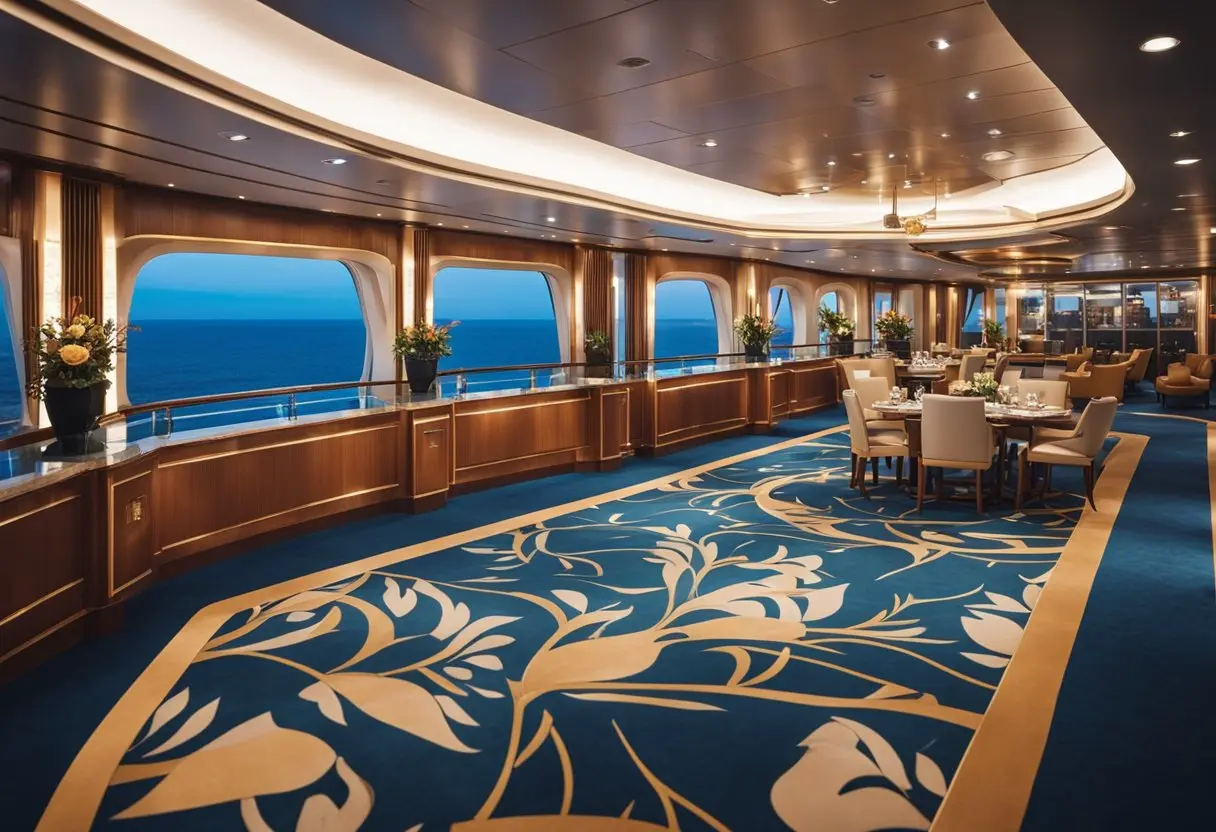
Stateroom Categories
Cruise ships offer a variety of stateroom categories to suit different budgets and preferences. The most common categories include interior, oceanview, balcony, and suite. Interior staterooms are the most affordable and do not have windows or balconies. Oceanview staterooms come with a window or porthole, while balcony staterooms have a private balcony. Suites are the most luxurious and spacious staterooms onboard, often featuring separate living areas, larger balconies, and exclusive amenities.
Onboard Facilities
Cruise ships are equipped with a wide range of facilities to keep passengers entertained and comfortable during their voyage. These facilities can include swimming pools, hot tubs, fitness centers, spas, casinos, shopping areas, libraries, and more. Many modern cruise ships also feature innovative amenities such as rock climbing walls, zip lines, water parks, and virtual reality experiences.
Entertainment Venues
Cruise ships are known for their diverse entertainment offerings, which can include Broadway-style shows, live music, comedy clubs, and movie theaters. Many ships also have nightclubs, bars, and lounges where passengers can socialize and enjoy drinks. Some ships even have outdoor movie screens, laser tag arenas, and escape rooms for added fun.
Cruise Lines and Their Fleets
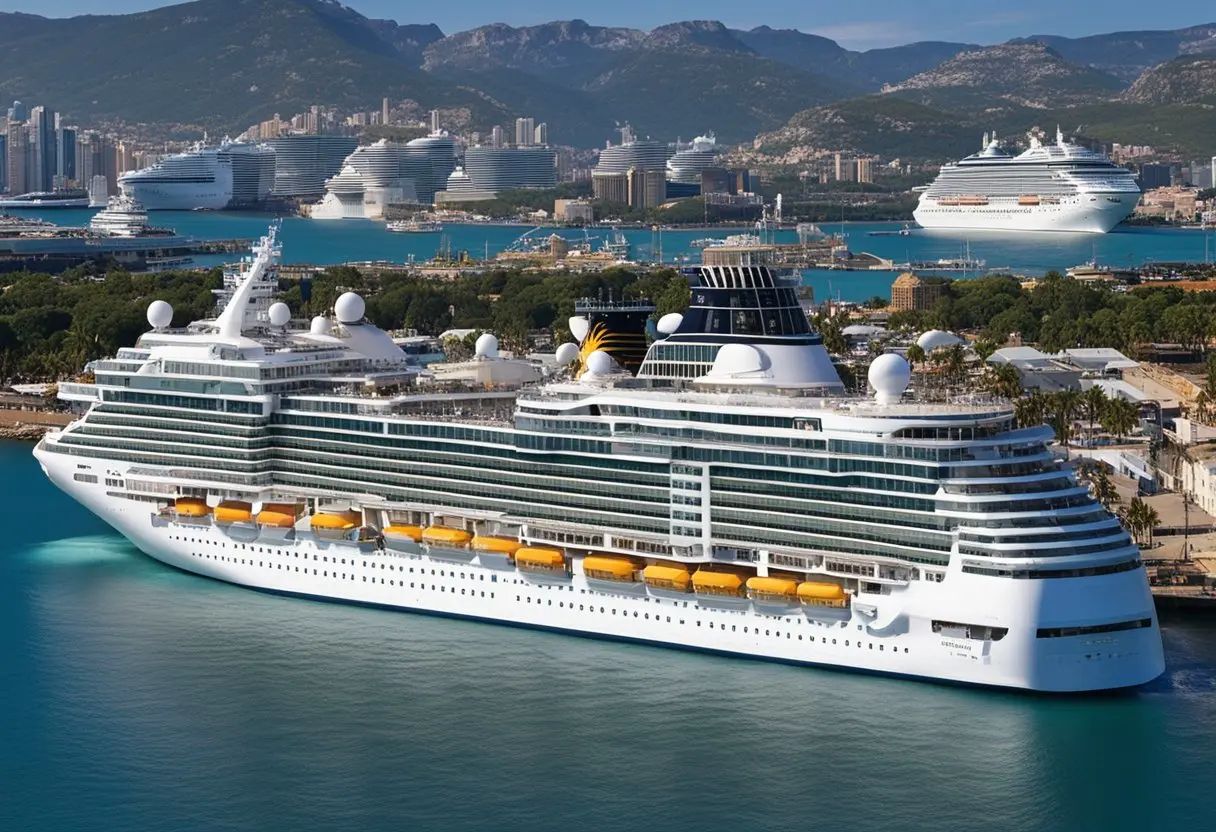
When it comes to cruising, there are a variety of cruise lines to choose from. Each cruise line has its unique style, amenities, and fleet of ships. Here are some of the major cruise lines, boutique cruise lines, and regional operators.
Major Cruise Lines
The major cruise lines are the largest and most well-known in the industry. They offer a wide range of itineraries, from short weekend getaways to month-long voyages. Some of the most popular major cruise lines include:
- Carnival Cruise Line: Known for its fun and festive atmosphere, Carnival Cruise Line has a fleet of 27 ships that sail to destinations all over the world.
- Royal Caribbean International: With 26 ships in its fleet, Royal Caribbean International is one of the largest cruise lines in the world. It is known for its innovative onboard activities and attractions, such as rock climbing walls, zip lines, and ice skating rinks.
- Norwegian Cruise Line: Norwegian Cruise Line has a fleet of 17 ships that offer a variety of dining options, from casual eateries to upscale restaurants. It is also known for its Freestyle Cruising concept, which allows passengers to dine and dress as they please.
- MSC Cruises: MSC Cruises is a European cruise line that has been expanding its presence in North America in recent years. It has a fleet of 18 ships that sail to destinations all over the world.
Boutique Cruise Lines
Boutique cruise lines are smaller, more intimate cruise lines that offer a more personalized experience. They often have unique itineraries and visit ports that larger cruise lines cannot. Some of the most popular boutique cruise lines include:
- Windstar Cruises: Windstar Cruises has a fleet of six ships that offer a luxury sailing experience. Its ships are smaller and can visit ports that larger ships cannot.
- Viking Ocean Cruises: Viking Ocean Cruises has a fleet of six ships that offer a more cultural experience. Its ships are designed to be more intimate and offer a more in-depth look at the destinations they visit.
- Seabourn Cruise Line: Seabourn Cruise Line has a fleet of five ships that offer a luxury cruising experience. Its ships are smaller and offer a more personalized experience, with a high staff-to-guest ratio.
Regional Operators
Regional operators are smaller cruise lines that operate in specific regions of the world. They often offer unique itineraries and visit ports that larger cruise lines cannot. Some of the most popular regional operators include:
- UnCruise Adventures: UnCruise Adventures operates in Alaska, Hawaii, Mexico, and Central America. Its ships are smaller and offer a more adventurous experience, with activities such as kayaking, hiking, and snorkeling.
- Ponant: Ponant operates in the Arctic, Antarctic, and other remote destinations. Its ships are smaller and offer a more luxurious experience, with amenities such as a spa, pool, and gourmet dining.
- American Queen Steamboat Company: American Queen Steamboat Company operates on the Mississippi River and its tributaries. Its ships are designed to resemble traditional steamboats and offer a more nostalgic experience.
Choosing the Right Cruise
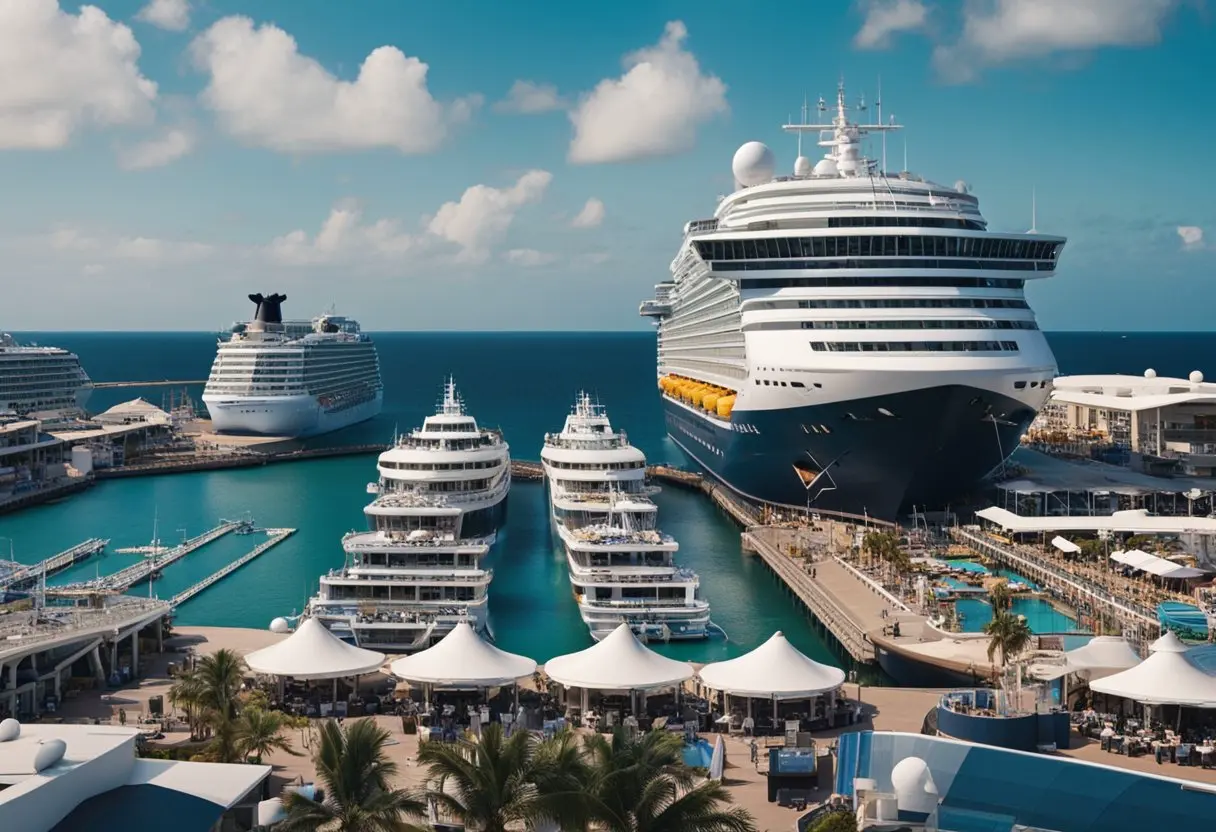
When planning a cruise vacation, choosing the right cruise ship type can be a daunting task. With so many options available, it can be overwhelming to determine which cruise line and ship is the best fit for your travel style and preferences. In this section, we will explore some considerations for selecting a cruise, how to match the cruise type to your travel style, and the benefits of seasonal and thematic cruises.
Considerations for Selecting a Cruise
When selecting a cruise, it is important to consider factors such as the duration of the cruise, the destination, the type of ship, the onboard amenities, and the price. Some cruise lines cater to families with children, while others are geared towards adults. Some ships offer a more casual atmosphere, while others are more formal. The onboard amenities can vary greatly from ship to ship, so it is important to determine what is important to you.
Matching Cruise Type to Travel Style
Matching the cruise type to your travel style is essential for a successful cruise vacation. For example, if you prefer a more relaxed atmosphere, a river cruise may be a better fit than an ocean cruise. If you are interested in exploring a specific region or culture, a themed cruise may be the way to go. For those who enjoy adventure and exploration, an expedition cruise may be the perfect fit.
Seasonal and Thematic Cruises
Seasonal and thematic cruises can offer unique experiences that are not available on other types of cruises. For example, a Christmas market river cruise in Europe can provide a festive holiday experience, while a fall foliage cruise in New England can offer stunning autumn views. Themed cruises can range from culinary cruises to music cruises, and can be a great way to combine your interests with your vacation.
In conclusion, selecting the right cruise ship type is crucial for a successful cruise vacation. By considering factors such as your travel style, onboard amenities, and the type of cruise, you can ensure that your cruise experience is enjoyable and memorable.
FAQs About Cruise Ship Types and Classifications
What distinguishes a mega cruise ship from other types of cruise vessels?
Mega cruise ships are the largest type of cruise vessels, accommodating more than 5,000 passengers onboard. These ships are known for their massive size, luxurious amenities, and wide range of onboard activities. They typically offer multiple restaurants, swimming pools, fitness centers, theaters, and even ice rinks and rock climbing walls. Mega cruise ships are designed to provide passengers with a resort-like experience at sea.
How are cruise ships categorized by size and what are the main classes?
Cruise ships are categorized by size based on their gross tonnage (GT). The main classes of cruise ships are small, mid-sized, and large. Small ships have a GT of less than 25,000 and typically carry fewer than 500 passengers. Mid-sized ships have a GT between 25,000 and 70,000 and carry between 500 and 2,000 passengers. Large ships have a GT of over 70,000 and can carry up to 6,000 passengers.
What are the characteristics that define a premium cruise line compared to contemporary ones?
Premium cruise lines are known for their higher level of service, personalized attention, and luxurious amenities. These lines typically offer more spacious cabins, gourmet dining options, and upscale entertainment. They also tend to have a higher crew-to-passenger ratio, which means that passengers receive more individual attention. Contemporary cruise lines, on the other hand, are more budget-friendly and offer a more casual atmosphere with a wide range of onboard activities.
Can you explain the different levels of cruise ships and what amenities they typically offer?
Cruise ships are typically classified into three levels: budget, mainstream, and luxury. Budget cruises offer basic amenities and are designed for travelers on a tight budget. Mainstream cruises offer a wider range of amenities, including multiple dining options, swimming pools, and entertainment venues. Luxury cruises offer the highest level of service and amenities, including gourmet dining, butler service, and exclusive access to certain areas of the ship.
What types of cruises are specifically tailored for adults and what unique features do they provide?
Adult-only cruises are becoming increasingly popular, and many cruise lines now offer cruises that are specifically tailored for adults. These cruises typically offer a more sophisticated atmosphere, with upscale dining options, wine tastings, and spa services. They may also offer a range of activities that are geared toward adults, such as dance classes, mixology lessons, and art auctions.
Related Posts
